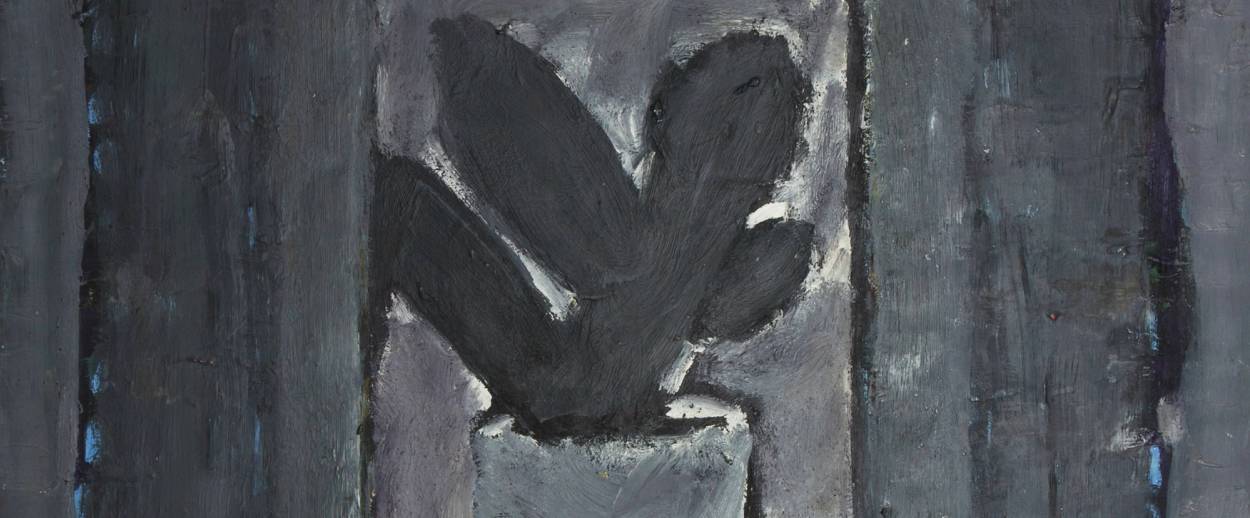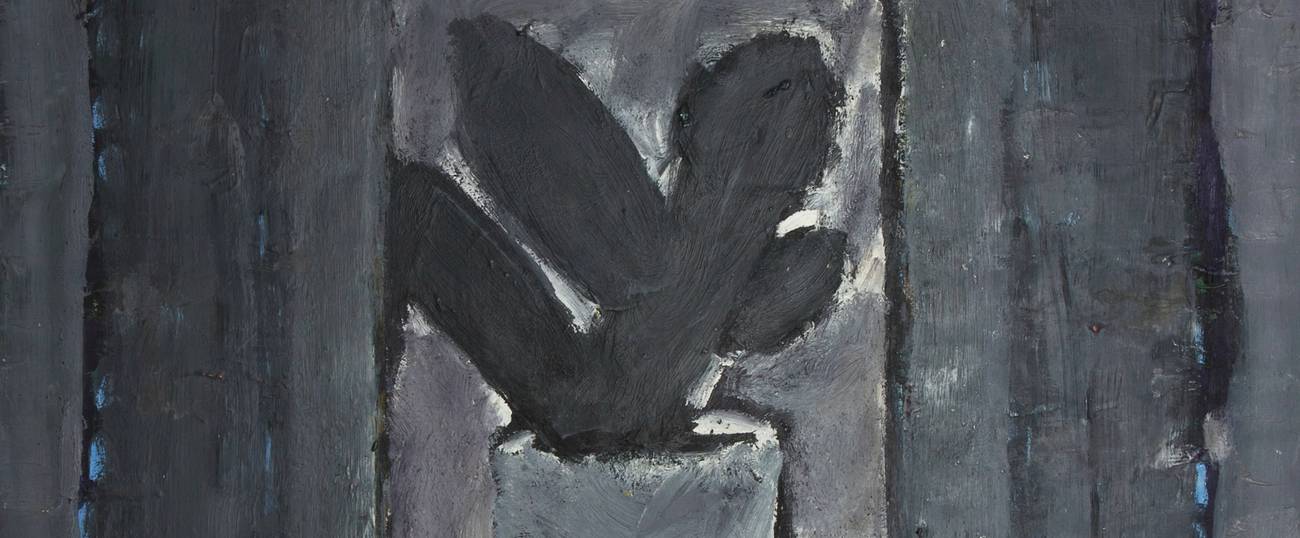DC Gets Rare Glimpse at Celebrated Israeli-Arab Painter’s Masterworks
Asim Abu Shakra, not well-known in America, was one of the most significant artists in Israel’s history




For the next three months, art enthusiasts in the nation’s capital will have the chance to see a rarely exhibited work from one of the most significant artists in Israel’s history. Asim Abu Shakra was born in Umm al-Fahm in 1961. By the time he died of cancer in 1990, he was already considered an artistic giant in the making—the Israel Museum held a memorial retrospective of his paintings in 1991, not long after his death. Abu Shakra’s life was short, and his output was relatively limited. He produced around 100 finished works in his lifetime, including a series of cactus still-lifes so vexing and elusive in their symbolic power that both Jews and Arabs have viewed them as signifying the core dilemmas of Israel’s very existence.
Abu Shakra’s 1989 painting “Cactus” is now on display at American University’s Katzen Arts Center, as part of a recently opened exhibition that features roughly 30 works from the collection of Sultan al-Qassemi, a liberal political commentator and member of the royal family of the emirate of Sharjah who has emerged as one of the world’s leading advocates of Arab modern and contemporary art. In the painting, concentric black rectangles enclose a potted cactus, an image that al-Qassemi described to me as “a frame within a frame within a frame within a frame.” The desert plant could also be sitting at the end of a series of recessed alcoves, or perhaps at the culmination of one of those unnervingly long hallways that occasionally pops up in horror movies. The cactus itself is a jet-black phantom—grotesquely elongated, free of perspective, pulled and flattened beyond any recognizably cactus-like form. There are pockets or white, and even a thin strip of yellow on what might be a window ledge, but the painting largely consists of lusterless free-floating rectangles, rendered in harsh shades of charcoal.
The painting is a vision of impending death, and Abu Shakra had only a few months to live when he finished it. But mortality is just the most obvious of its themes. “Cactus” also depicts a metaphor for national being that’s been been ripped from its natural habitat and placed on a window sill—a symbol that’s resonant for Jews and Arabs alike.
Among Israeli Jews, the word “sabra” refers both to the fruit of a flowering native cactus and to people born and raised in the land of Israel, generations thought to be as prickly, resilient, and anchored to the soil as their namesake plant. Among Palestinians, that same cactus is a symbol of national endurance and loss, with the region’s succulents “scattered upon the face of the homeland like memorial candles whose wicks have invisible flame, and whose molten wax is buried deep in the ground,” as the Palestinian author and University of Michigan professor Anton Shammas wrote in an essay on Abu Shakra’s work which al-Qassemi shared with me. For Shammas, Abu Shakra’s potted cactuses evoked the possibility of coming to grips without having to sacrifice the vital core of historical memory. ”You take the past and condense it into a brush stroke,” as Shammas put it.
Abu Shakra’s work spoke to Israeli Jews as well—in Abu Shakra’s paintings, “Palestinian foreignness seems to cast its shadow on what might be the best of Israeli art,” according to Israeli critic and curator Tally Tamir. Abu Shakra attended a Jewish high school and worked with Jewish dealers and curators, and as al-Qassemi told me, the artist gave all of his major interviews in Hebrew. For Jews, his paintings invite reflection on the shared sources of meaning that span even the most painful historical divides. Abu Shakra’s cactuses aren’t accusatory in a way that would alienate Jewish viewers, but they aren’t cheaply optimistic, either—the painting in the Katsen show is powerful partly because of its bleakness.
Al Qassemi acquired the painting in 2014. While it’s been on display in Tehran’s contemporary art museum as part of a major exhibition of work from al-Qassemi’s collection, it’s unclear when or if this late-period Abu Shakra cactus has been on public display in the US before. Al-Qassemi said he wanted an Abu Shakra from his collection partly to highlight the Arab aspects of the artist’s identity. “I feel the Israelis have had a 30-year head start presenting him as an Israeli artist,” al-Qassemi said. “He should also be shown in an Arab context as well.”
“Between Two Rounds of Fire, The Exile of the Sea” runs until December 17th at American University’s Katzen Center.
Armin Rosen is a staff writer for Tablet Magazine.